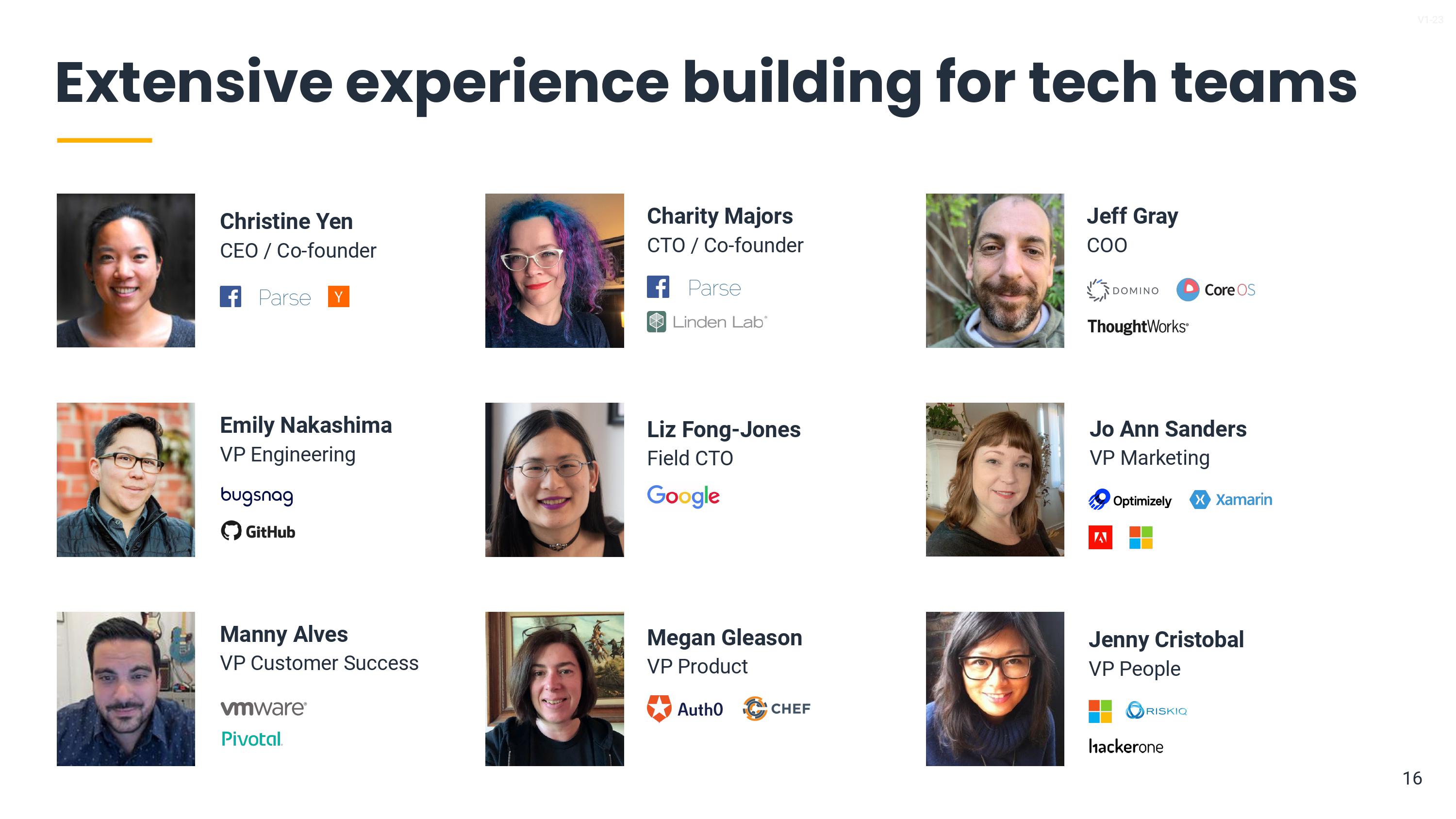Honeycomb raised $50 million to make the new landscape of platforms and services more perceptible. The long-term goal is to make life easier for people using large software platforms.
“What we saw in 2015 and 2016 is that the world is moving in a direction where that complexity was inevitable, whether it was a heightened interest in being able to do things like customer ID-based outages or these exploding complexity that was about to be driven. by Kubernetes, microservices and containers. We [believed] the world [was] we need a tool like this that gives users both speed and flexibility,” Christine Yen, co-founder and CEO of Honeycomb, told businesskinda.com in a previous interview.
I find this fascinating and was excited to go through the company’s pitch deck to learn more.
We’re looking for more unique pitch decks to break down, so if you’d like to submit your own pitch decks here’s how to do it.
Contents
Slides into this deck
The company didn’t remove slides from its 18 slides, but it redacted sales numbers and faded customer and competitor logos.
Here’s a quick breakdown of the honey Honeycomb used to land $50 million in the hive:
- Cover slide
- Snapshot data summary slide
- Problem slide
- Solution slide
- Competitive landscape slide
- Product category summary slide
- Customer landscape slide part 1 (mostly redacted)
- Customer Landscape Slide Part 2 (Mostly Redacted)
- Market positioning slide
- Value proposition slide
- History/product timeline slide
- Go to market interstitial slide
- GTM: Land-and-expand approach slide
- GTM: Gaming vertical slide
- Going Forward interstitial slide
- Team slide
- The Ask slide
- Closing slide
Three things to love
Honeycomb builds a product that – based on its traction alone – is clearly needed, and it does a good job of weaving its story together.
This is how to make a “question” slide!
![[Slide 17] Look at that! Yes!! Image credit: honeycomb](https://businesskinda.com/wp-content/uploads/2023/04/Sample-Series-D-pitch-deck-Honeycombs-50M-deck.jpg)
[Slide 17] Look at that! Yes!! Image Credits: Honeycomb
One of my pet peeves about slide decks is that the vast majority of founders get this slide wrong. It is a breath of honey smell to see a company doing so well. Honeycomb clarifies the need ($50 million) and exactly what it will do with the money: start in 2026, a specific ARR target, and the option to focus on growth or stabilize into a running, profitable business. It also lists IPO readiness as a target (which is a bit vague; does it mean it wants to be ready for the IPO and then raise another round to do the IPO, or does the $50 million include all the household needed is to go public?), along with some somewhat ambiguous, but clear enough goals around channels and products.
I would use this as the basis for a ‘question’ slide. Be clear, be focused. Show what your fundraiser will achieve. (Though the company calls 2026, the runway isn’t the slide’s main focus, which is exactly how it should be.)
I wish more team slides looked like this, but…
OK, for a team slide, this isn’t great: it doesn’t explain Why all of these people have a founder/market fit, and it doesn’t show why this team is in a unique position to take Honeycomb to the next level. Specifically, for a round that suggests an IPO is imminent, I want to know that at least some of the people in the leadership know how to do that or at least have support from people with IPO experience.

[Slide 16] Team slide! Image Credits: Honeycomb
And yet this team is refreshing in how diverse it is, which is sadly quite rare in the startup world, and especially in B2B enterprise SaaS companies. Having a diverse leadership team doesn’t happen by accident; it’s a collaborative effort in hiring and team building. Investors, take note.
Of course, this is not an easy “solution”. If you’re putting together a slide deck to take your next round to the next level, and that’s the first time you realize your team slide is filled with Stanford-educated white dudes, no amount of creative storytelling can get you started. to rescue. It is essential to think about the type of business you want to build and put into the world. As a startup founder, you get to make choices about the kind of organization you want to create.
So, who actually needs this?
For people who are not immersed in development and software, a software engineering observation platform seems very niche indeed. Damn logos be damned, this slide does a great job of telling the story:

[Slide 7] Excellent storytelling means you don’t even have to actually see the logo. The point has been made. Image Credits: Honeycomb
Trust me when I say there are some serious, well-known brands on this slide. But even with the logos faded, this slide does a great job of telling the company’s story: it shows the breadth of companies and industries that work with Honeycomb. “Who is this product for?” is a question all investors will be asking, and with this slide it’s clear the answer is: usually everyone.
Janice has been with businesskinda for 5 years, writing copy for client websites, blog posts, EDMs and other mediums to engage readers and encourage action. By collaborating with clients, our SEO manager and the wider businesskinda team, Janice seeks to understand an audience before creating memorable, persuasive copy.

